Updated 21:49, 17-Jul-2021
Gong Zhe
It's been a month since the Shenzhou-12 spacecraft carried the three Chinese astronauts, or taikonauts, to China's space station. As one of the most important missions for the manned space program, the Shenzhou-12 is a display of China's latest space technology.
The China Manned Space Engineering Office (CMSEO) on Saturday published a timeline of Shenzhou-12's progress so far. And here's a translation of it.
All timestamps below are in Beijing Time.
6:32 a.m., June 17, 2021: Taikonauts set off
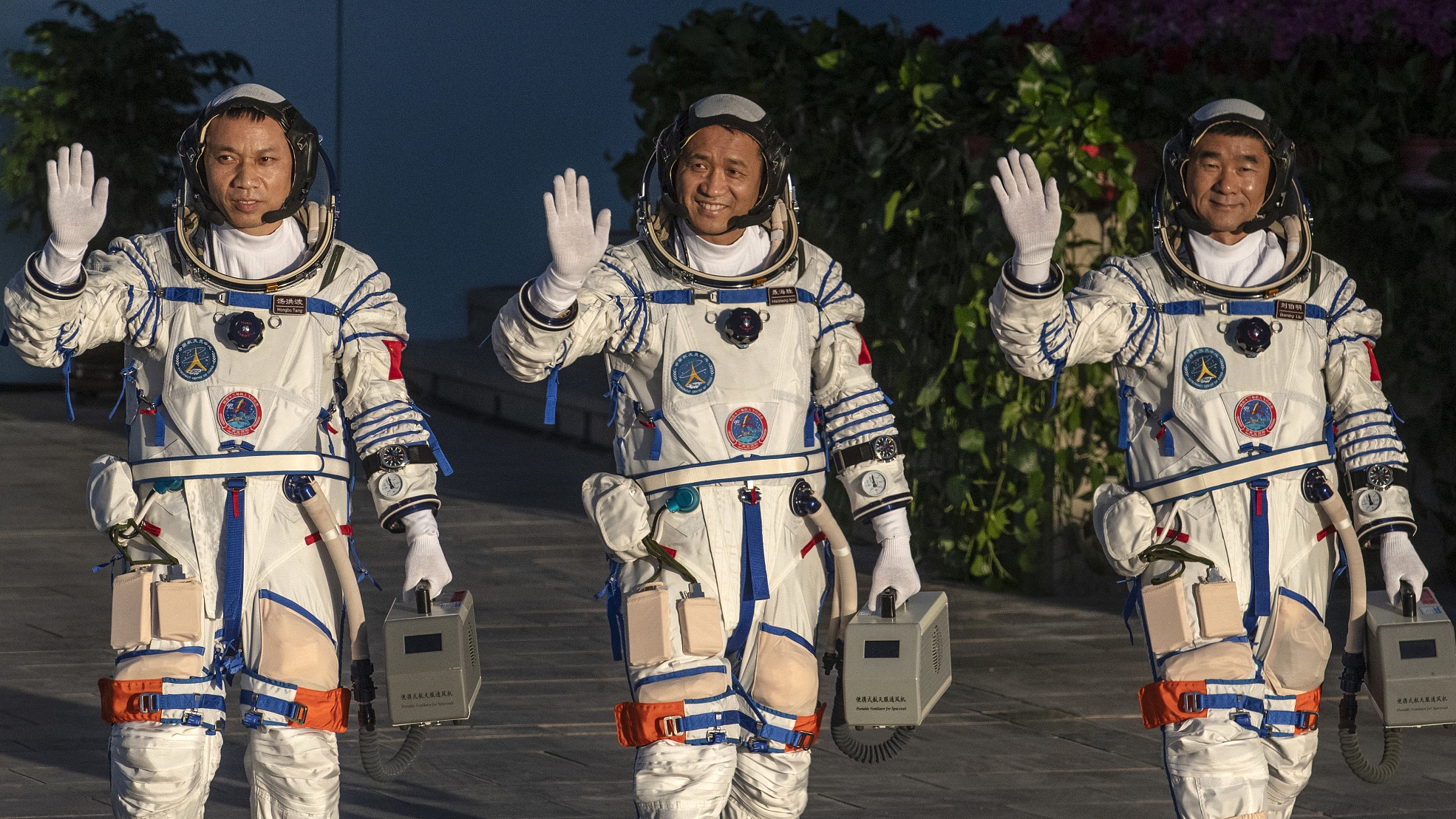
L-R: Tang Hongbo, Nie Haisheng and Liu Boming before the launch of the Shenzhou-12 spacecraft at Jiuquan Satellite Launch Center, June 17, 2021. /CFP
After fierce training sessions – including underwater work wearing 200-kilogram spacesuits – the three taikonauts, namely Nie Haisheng, Liu Boming and Tang Hongbo, have finally walked out of training center and boarded the Shenzhou-12 spacecraft.
"The most challenging task is not those training sessions. Instead, it's maintaining the passion of an explorer at heart," the CMSEO said.
Nearly three hours later: Rocket launched
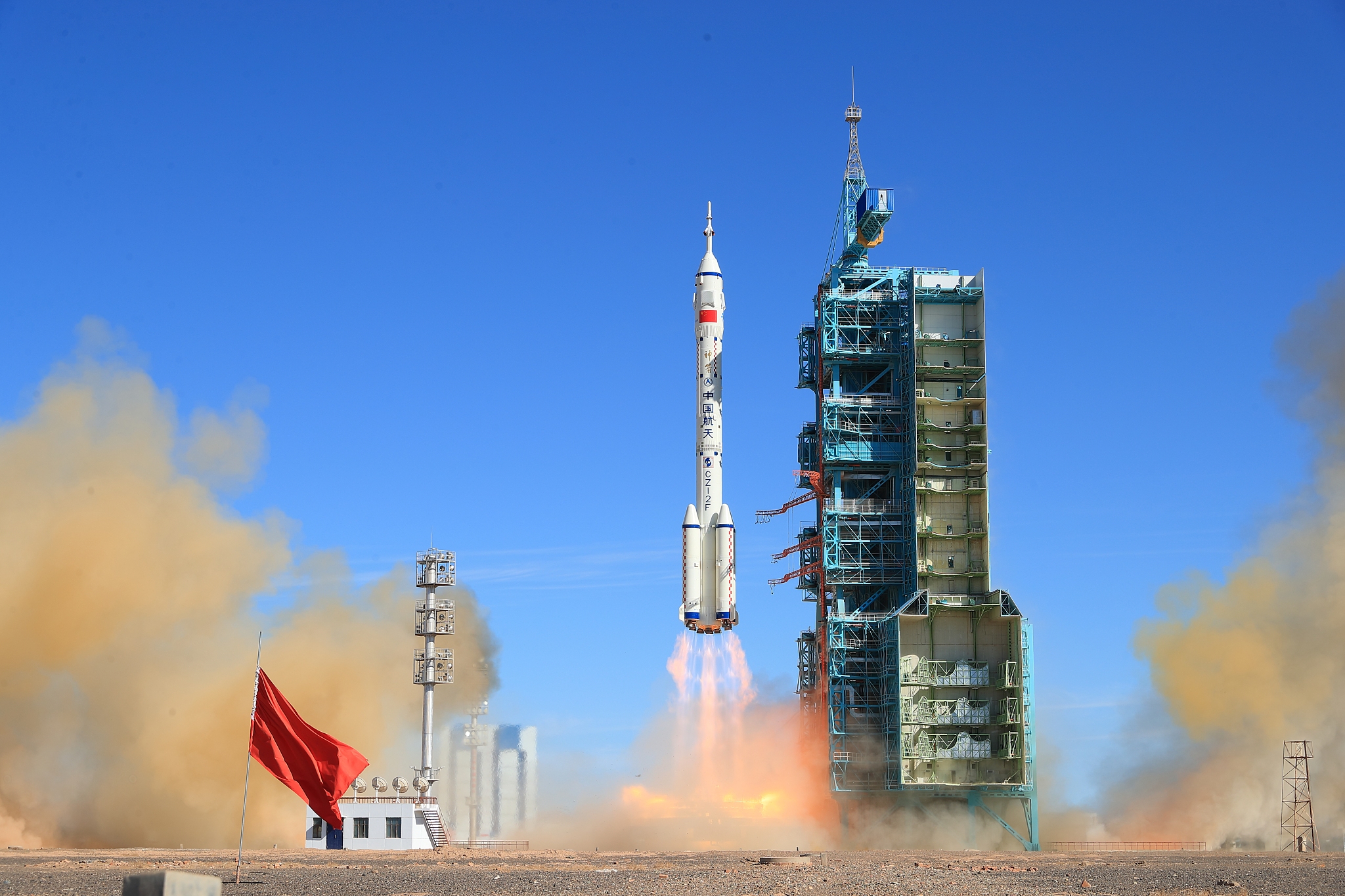
A Long March-2F Y12 rocket, carrying the Shenzhou-12 spaceship with Nie Haisheng, Liu Boming and Tang Hongbo on board, blasts off from Jiuquan Satellite Launch Center in NW China, June 17, 2021. /CFP
A Long March-2F rocket carried the Shenzhou-12 to orbit from Jiuquan Satellite Launch Center. It took about 573 seconds for the rocket to put the spacecraft into space.
"It's been five years since the last taikonaut broke out of the atmosphere," the CMSEO said. "We are moving firmly to the goal we set."
3:54 p.m.: Shenzhou-12 docked with the China Space Station core module
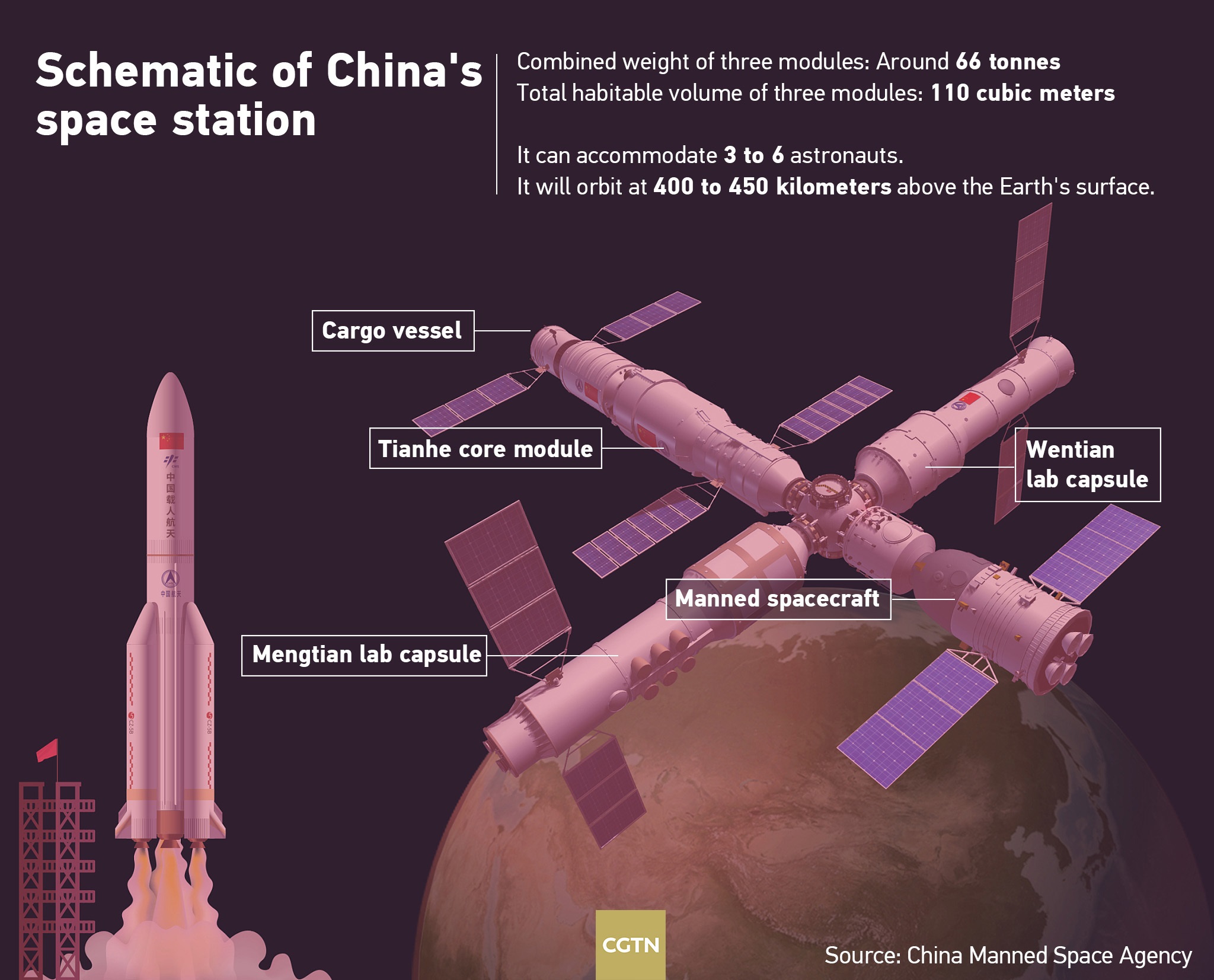
The core module of the space station – Tianhe – was already waiting on the orbit. Serving as a connector of other space station modules, it was launched back in April.
Already connected to the station is the Tianzhou-2, a cargo ship filled with supplies needed by the taikonauts to survive, work and have fun.
The docking between Shenzhou-12 and the China Space Station was done automatically by machines without human intervention.
6:48 p.m.: Taikonauts entered China's space station
Described by the CMSEO as a "milestone of a new age" for China's space exploration, the entrance means a lot for the Chinese people.
The three-person crew is expected to stay in the space station for three months, during which time they'll help set up the station and carry out some scientific research.
9:30 a.m., June 23: A video call from the president
Chinese President Xi Jinping made his first video call to the space station and extended his greetings to the taikonauts.
June 30: 'Happy birthday' from space
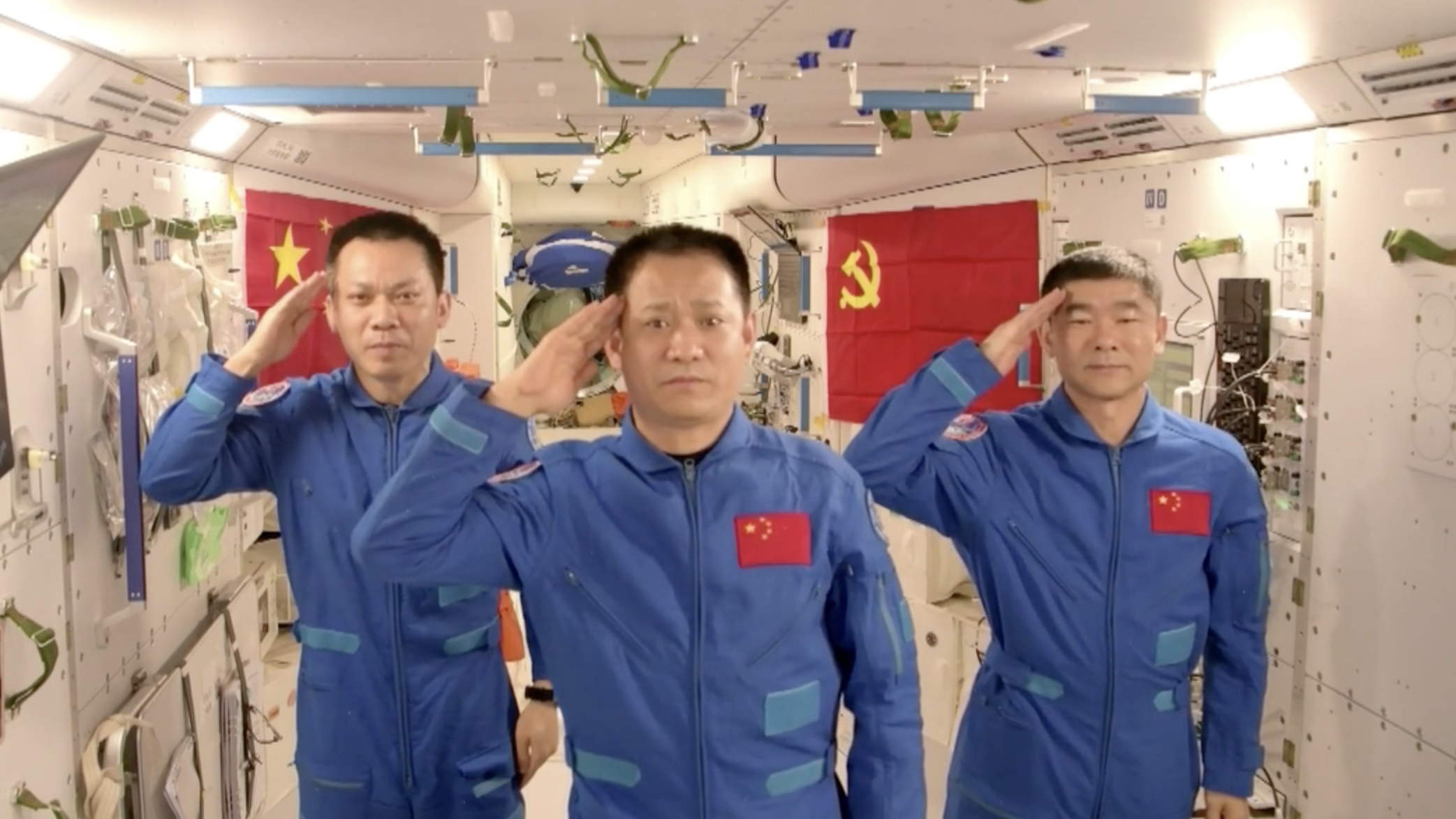
The three taikonauts sent birthday wishes to the Communist Party of China (CPC) from space, ahead of the CPC's centenary.
"Each success of the space program relates to the CPC's decisions, care and leadership," the CMSEO said.
8:11 a.m., July 4: Spacewalk with a robot arm
Two of the three taikonauts performed a seven-hour-long session outside the space station.
A robot arm helped Liu Boming to and from one place to another on the outside of the space station.
CMSEO said China's space program will carry on with their endeavor in space.
Working, dining, TV watching, exercising: A typical day in China Space Station
CGTN
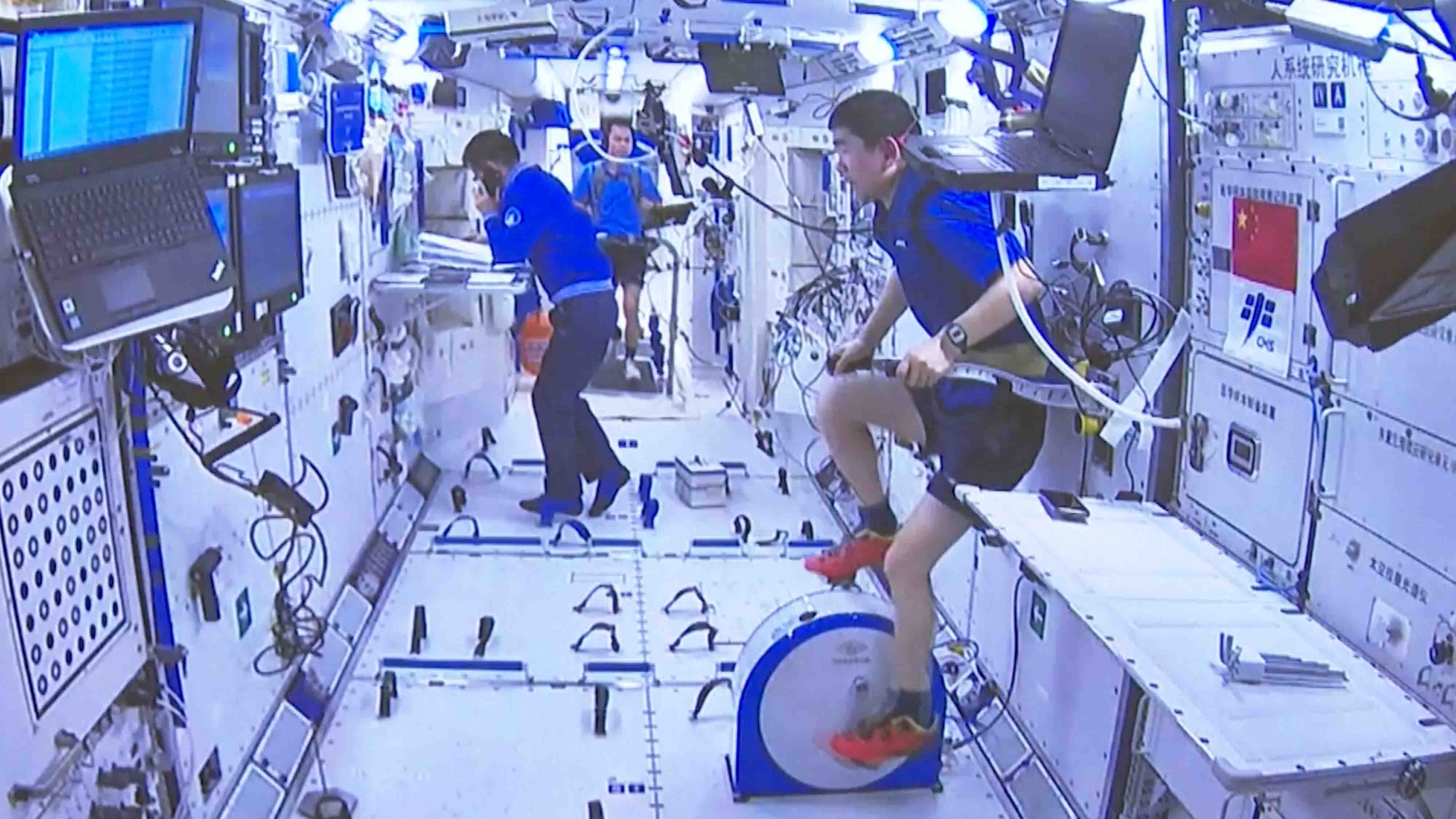
One month has passed since the three Chinese astronauts, or taikonauts, moved into the Tianhe core module of China's space station Tiangong. Their daily life aboard the space station has been a novelty for people back on Earth.
Read more: A month in China Space Station: What's been done so far?
A China Media Group (CMG) reporter went to the Astronaut Center of China on Friday to take a sneak peek at the taikonauts' routine.
The trio started work at 8:00 a.m. Beijing time on Friday. They completed a platform inspection of the manned spacecraft and collected trace elements in the air in four hours.
Afternoon work began at 2 o'clock. On arriving at the center at about 4 p.m., the reporter saw Nie Haishang and Tang Hongbo replacing the carbon dioxide removal device, which is part of the environmental control and life support systems in the cabin.
They had dinner at around 6 p.m., as they do every day, and finished in one hour, after which they started watching "Xinwen Lianbo," the most-watched daily TV news program in China.
The support team on the ground regularly transmits news programs to the taikonauts, which is one of the primary means through which they are kept updated about things happening on the ground, according to CMG.
Working out is one of the top priorities to keep healthy in space. The taikonauts were provided with various customized fitness equipment, including a bicycle and a treadmill.
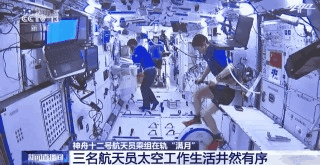
While Liu Boming exercised on the space bike and Tang was on the treadmill, Nie, as mission commander, talked to the ground crew about the day's work and plans for the next day.
"Exercising is a daily routine for them, and everyone has their 'prescription,'" said Li Yinghui, deputy chief designer of the astronaut system of China's Manned Space Program.
"The exercise intensity now is about 60 to 80 percent of their maximum capacity and will increase with their in-orbit time to sustain them against the physiological effects brought by weightlessness," Li explained.
As planned, the trio carried out the platform inspection of the core module, material transport, garbage storage, and space medical experiments on Saturday.

No comments:
Post a Comment